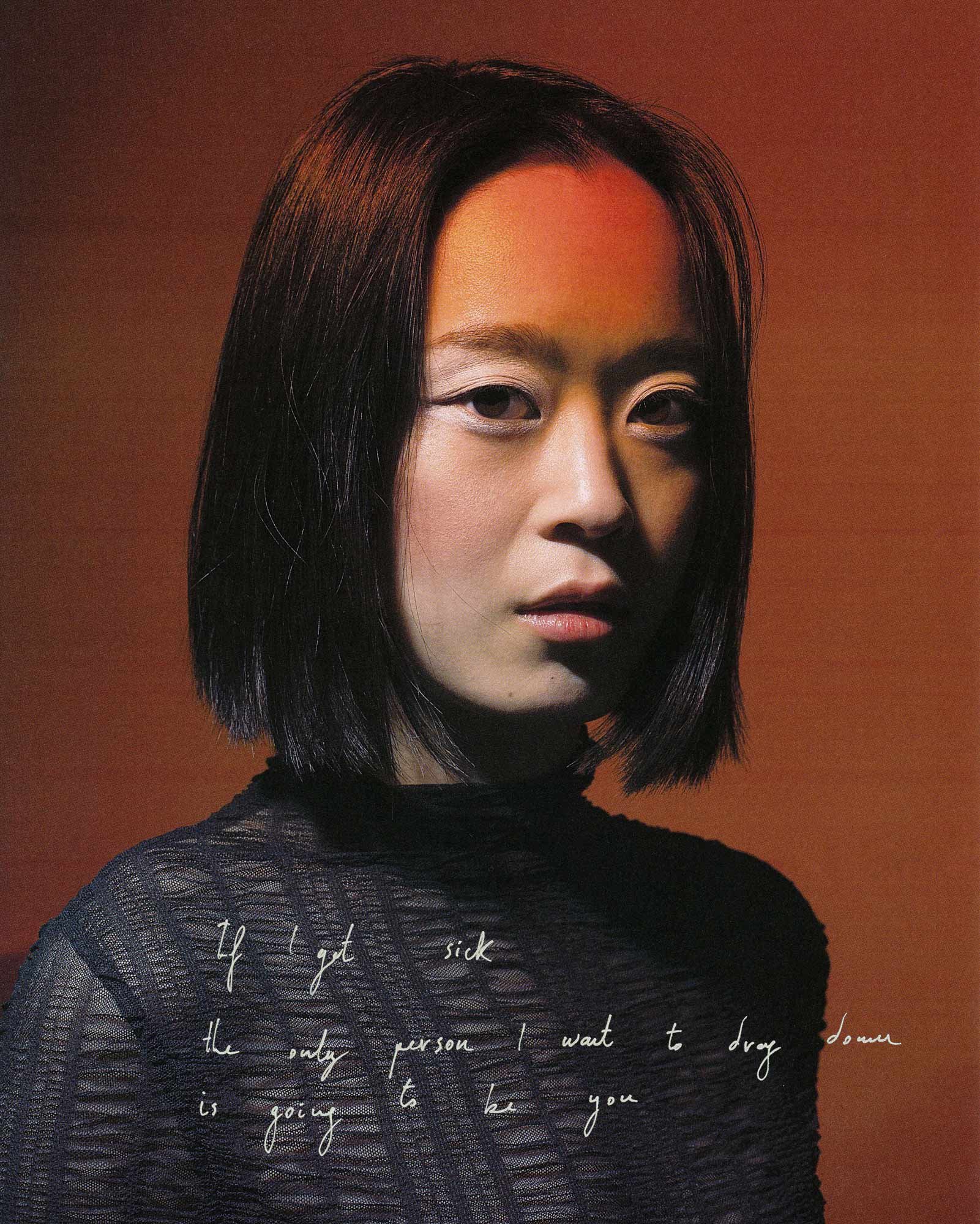Me a person who doesn’t dream — 今生我是一个不会做梦的人
The deepest colors of sensuous blue and intimidating shades of red come in contrast with the gradient yellow and white backgrounds. The stare pierces through to subjectively announce a thought and declare a statement. The silky glow from the fabrics appears to complete the radiance of the lipstick and accessories to reconcile with the atmosphere suggested.
The story is presented through the prism of the poem written by Minjun Xüe, a talent and writer. It touches on the topics of the impetuous flow of life, imminent death, the gradual loss of meaning in the process of fading, and the self-determination and decisions.
We speak with the photographer Ana Alborés and the talent and writer Minjun Xüe about the thin thread between reality and dreams. Xüe presents her vision of the poem, the way the illusion of the person is created by working with mirrors and shadows. Ana explains the technical aspects of operating with lights to create the ultimate space between dream and the current moment. “It was a game of perspective and lighting. I found so curious the connection between light and dreams.” - Ana Alborés.
Photography Ana Alborés Hair and makeup Mary Correa Ph Assistant Arancha Brandón and Adriá Fabregat Talent and Writer Minjun Xüe
‘Dreaming is to rest from this life connecting these two places through a thread that keeps us alive.’
— Ana Alborés
What is dreaming for you?
Ana: Dreaming is to rest from this life connecting these two places through a thread that keeps us alive.
Xue: I steal a lot of things from my dreams and bring them to real life (verses, basically, and some recipes as well). It's full of 'not supposed to' when we dig deep into what we've dreamed: experiences not supposed to be taken seriously, conversations not supposed to be heard. Dreaming is the reality that happens illegally, a black market, where I gain an extra life and what’s not supposed to occur in my mind.
‘The poem illustrates personal emotion that uses selfishness and possession to struggle against the whole universe, in which being alive is a one-time experience.’
— Minjun Xüe
What was the process of connecting the poem’s lines to the visual representation of it and its main idea in the photoshoot?
Xue: The poem illustrates personal emotion that uses selfishness and possession to struggle against the whole universe, in which being alive is a one-time experience. It's about sacrificing the gentle ability to dream to reduce the uncertainty of loss and loneliness.
With the mirror and lighting, we could create a scene that divides one person into various individuals. It's hard to tell if the body is the main object, maybe in another universe, it happens to be what we call a 'shadow'. We build up ambiguous figures in the artificial dream, hoping that uncertainty and gentleness could coexist for once tenderly, in this one-time scene.
‘It was a game of perspective and lighting. I found so curious the connection between light and dreams. When we added more light, the shadows blurred, the assistants and I tried to find the shadows sometimes without a result.’
— Ana Alborés
The feeling of a dream is developed through the concept of shadows. The model has two shadows of her body, creating an imprint of the physical in the real world. Tell about the work with light and teamwork with photographer assistants on this concept.
Ana: It was a game of perspective and lighting. I found so curious the connection between light and dreams. When we added more light, the shadows blurred, the assistants and I tried to find the shadows sometimes without a result.
Xue: Actually, in the view of me as the model, there was another figure in the mirror which was in front of me. Standing right beside a figurative shadow made me even lonelier than being surrounded by shadows of mine.
‘The photos with two shadows resisted us, and the time ran out very quickly.’
The stare is present in the lines of the poem and its visualization through the model’s gaze. What is the main statement or question that is posed through this gaze? What does it mean for you?
Xue: Personally, there's a contrast between the gaze and the dreamy set. I always see film critics over-interpreting the gaze scene and giving it additional meanings. But a gaze captured in a dream can be simply a sign of being awake in the fantasy. Dream seriously, there's only one who can be truly awake among all the shadows, stay conscious to gain the chance to live twice.
Tell a story from the set or the preparation for the shoot, which remained in your memory.
Ana: I find interesting how fast or slow a very similar process can be. For example, with the red portrait, I took the photo almost immediately (with the help of my assistants, of course). However, the photos with two shadows resisted us, and the time ran out very quickly.
Xue: The eye shadow color was almost a random mixup, the shoes and the socks were a blind choice.
The Poem:
Me a person who doesn’t dream
If I get sick
the only person I want to drag down
is going to be you
I make no bets on
the circle of fate
or any well-structured life
I’m afraid that time passes ruthlessly
places vanish ruthlessly
and everything becomes invalid at the moment
when death shuts down all the feelings
I’m afraid that you may not be an exception
Selfishness is what I take as an excuse
to gain an extra glance at you
to fight against this
one-time universe
今生我是一个不会做梦的人
如果我病了
我最想拖累的就是你
我不想将赌注押在
轮回的命运
和顺理成章的生活
我唯恐时间无度
宇宙无度
死后一切随感知停滞
尽数作废
我唯恐连你也不能例外
我只愿以自私作藉口
留你让我多看一眼
以抗衡这个一次性的时空







